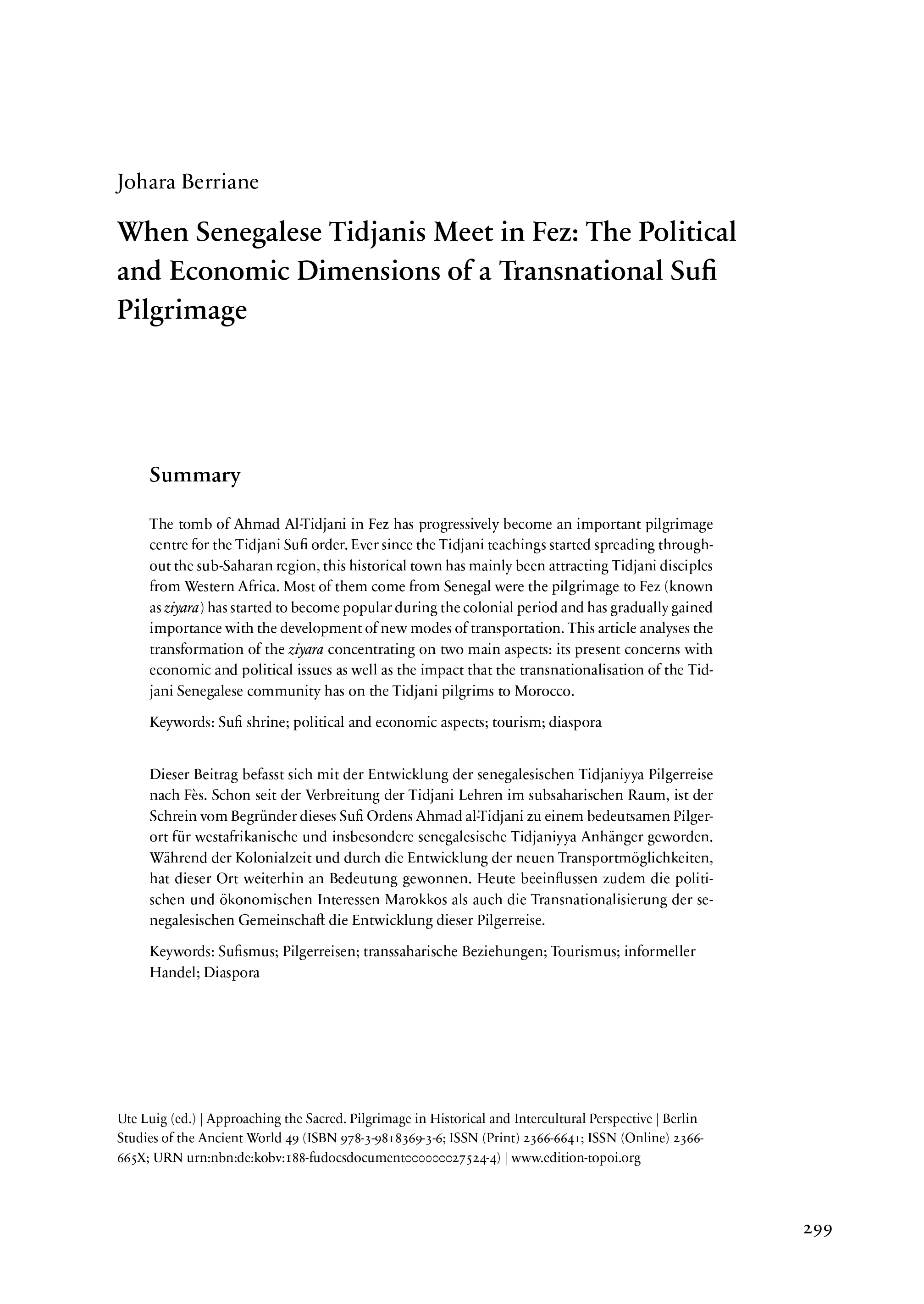When Senegalese Tidjanis Meet in Fez: The Political and Economic Dimensions of a Transnational Sufi Pilgrimage
The tomb of Ahmad Al-Tidjani in Fez has progressively become an important pilgrimage centre for the Tidjani Sufi order. Ever since the Tidjani teachings started spreading throughout the sub-Saharan region, this historical town has mainly been attracting Tidjani disciples from Western Africa. Most of them come from Senegal were the pilgrimage to Fez (known as ziyara) has started to become popular during the colonial period and has gradually gained importance with the development of new modes of transportation. This article analyses the transformation of the ziyara concentrating on two main aspects: its present concerns with economic and political issues as well as the impact that the transnationalisation of the Tidjani Senegalese community has on the Tidjani pilgrims to Morocco.
Dieser Beitrag befasst sich mit der Entwicklung der senegalesischen Tidjaniyya Pilgerreisenach Fès. Schon seit der Verbreitung der Tidjani Lehren im subsaharischen Raum, ist der Schrein vom Begründer dieses Sufi Ordens Ahmad al-Tidjani zu einem bedeutsamen Pilgerort für westafrikanische und insbesondere senegalesische Tidjaniyya Anhänger geworden. Während der Kolonialzeit und durch die Entwicklung der neuen Transportmöglichkeiten, hat dieser Ort weiterhin an Bedeutung gewonnen. Heute beeinflussen zudem die politischen und ökonomischen Interessen Marokkos als auch die Transnationalisierung der senegalesischen Gemeinschaft die Entwicklung dieser Pilgerreise.

